Laboratory for Physicochemical and Non-Destructive Testing
Leader: prof. dr hab. Elżbieta Basiul
Research on the condition, composition, chronological layers, internal structures, origin, and dating of historical objects, including:
-
Determination of the technique used in the creation of historical artifacts and conservation analysis of their condition, including the extent of past conservation interventions – utilizing multispectral imaging methods (VIS, IR, UVR, FCIR, FCUV) with a camera and filters.
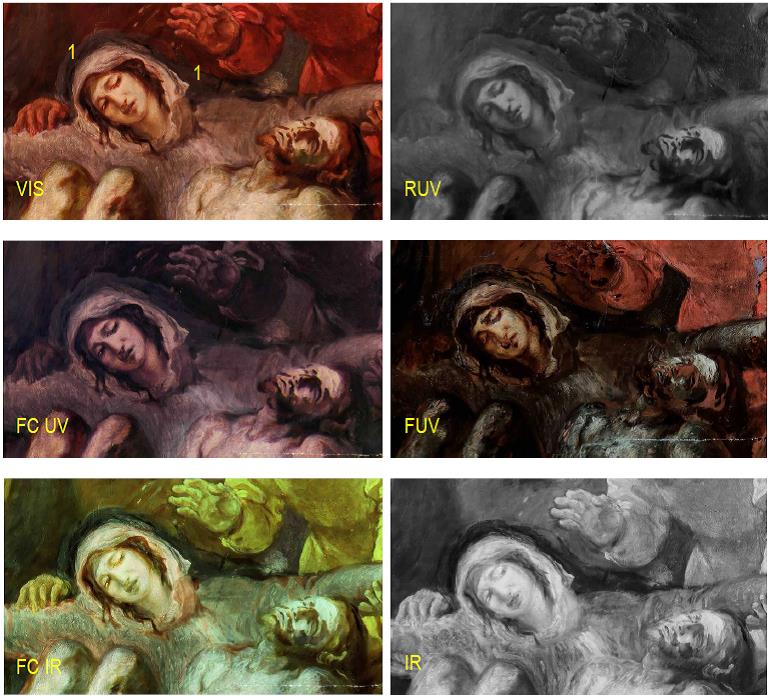
Multispectral Conservation Analysis of the Mural Painting Pietà by Eugène Delacroix in the St. Genevieve Chapel of the Saint-Denis-du-Saint-Sacrement Church in Paris
-
Research on the technique o fhistorical artifacts and conservation analysis of their condition, including past conservation interventions. The study involves the use of the portable hyperspectral camera Specim IQ — a specialized device for data recording and processing. This camera is equipped with Specim IQ Studio software, which enables visualization of results and the execution of advanced analyses. The software tools allow for importing, exporting, and managing multispectral data, as well as creating models and reference spectra. The Specim IQ camera is an imaging device designed to capture images containing extensive spectral information in each pixel of the recorded image of the historical object.
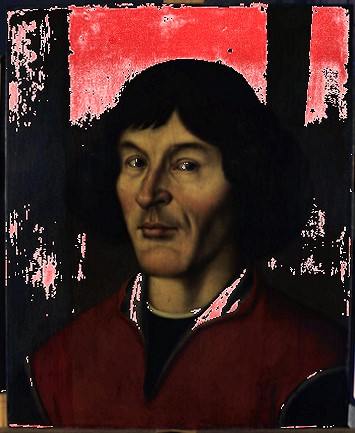
Portrait of Nicolaus Copernicus from the District Museum in Toruń – imaging with the SPECIM Hyperspectral Camera – raw umber mapping
-
Identification of Pigments and Organic Dyes, Organic and Inorganic Binders, Natural and Synthetic Resins, Gum Resins, Protein-based Glues, etc., including the analysis of paint layers on various substrates and made with different techniques, such as paper, textile dyes, watercolors, pastels, inks, drawings, ceramics, waxes (plant-based, animal-based, and mineral-based), etc. This involves the recording of absorption spectra from very small areas, as small as 4 square micrometers, using FTIR (Fourier-transform infrared spectroscopy), the FTIR Lumos II microscope, and microscopic analysis.
-
Determination of elements and overall chemical composition of inorganic materials; obtaining precise information on the crystalline structure and phase composition of materials found in samples of paint layers, plasters, mortars, stones, ceramics, etc., by means of ED-XRF (Energy-Dispersive X-ray Fluorescence) and an XRD (X-ray Diffraction) diffractometer to analyze the materials.
-
Non-invasive registration of internal structures of historical objects such as paintings on canvas and wooden substrates, polychrome sculptures, altar elements, codices, ceramics, miniatures, watercolors, pastels, etc., using a portable digital X-ray system. The study and analysis of the revealed internal structures, along with the interpretation of pigment distribution and structural anomalies, are routinely commissioned by conservation companies, museums, archives, conservation offices, auction houses, and private customers – using a digital X-ray system.
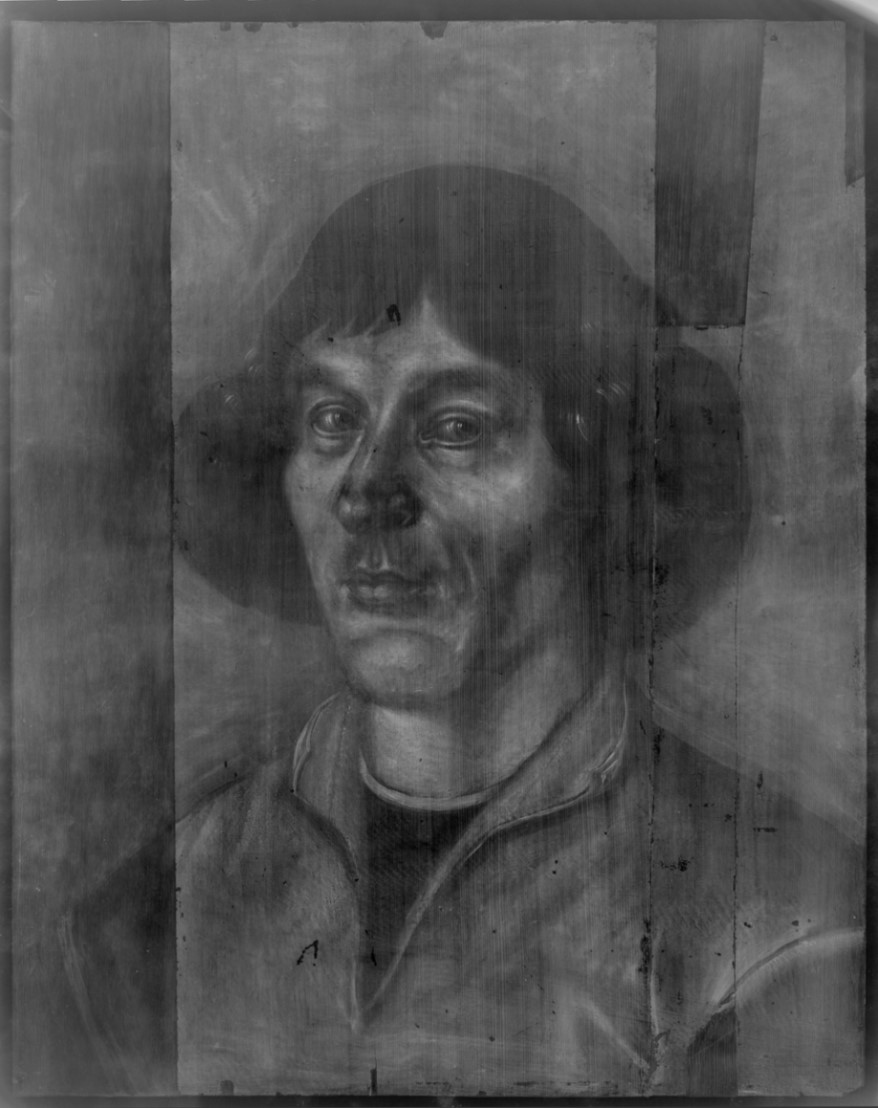
Portrait of Nicolaus Copernicus from the District Museum in Toruń – imaging with the digital X-Ray system
-
Research using gas chromatography allows for the precise identification of historical and contemporary organic painting binders: oils, casein, egg yolk, egg white, animal glues, natural resins, waxes, and synthetic resins. In the laboratory, analyses and identification of organic dyes and varnishes are carried out (in collaboration with the Centre for Modern Interdisciplinary Technologies).
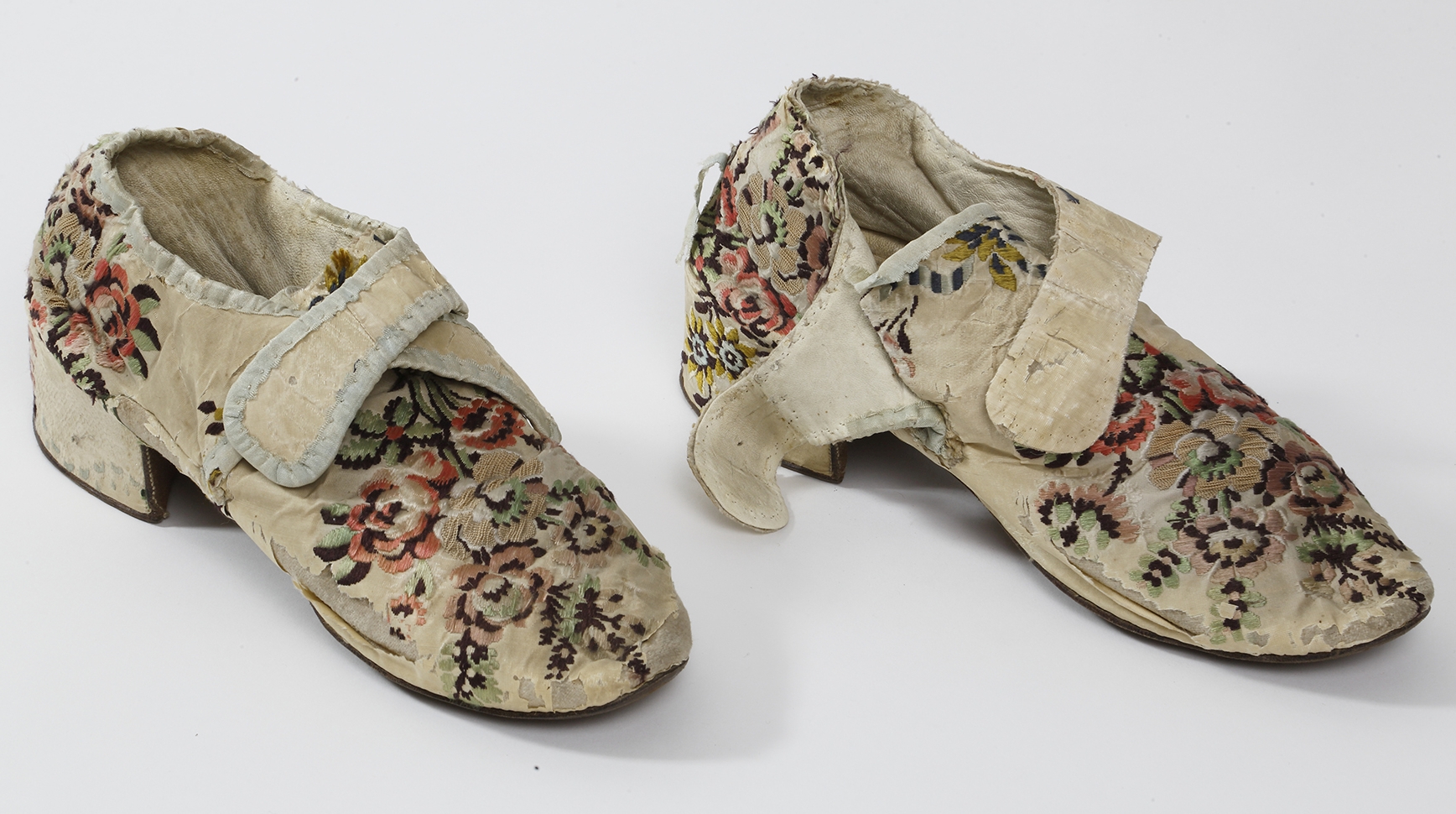
Pontifical Shoes from the Benedictine Nuns' Abbey in Krzeszów, 1st half of the 18th c. The red threads used for decorating the shoes were analyzed by means of capillary electrophoresis in non-aqueous conditions (NACE). Organic compounds were identified, indicating the use of dyes derived from cochineal and madder root (Rubia tinctorum)
7. Microscopic examination of samples taken from historical objects – analysis of stratigraphy of paint layers, including thickness measurements. Preparation of cross-sections of paint layers, identification of pigments, organic dyes, and binders using optical analytical techniques – recording of fluorescence induced by ultraviolet radiation and analysis using false color techniques.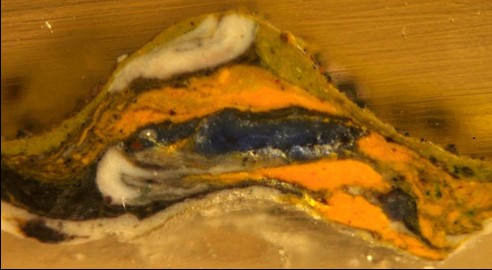
Examination of Paintings by Chen Wen His from the National Gallery in Singapore – photomicrography of a paint layer sample in visible light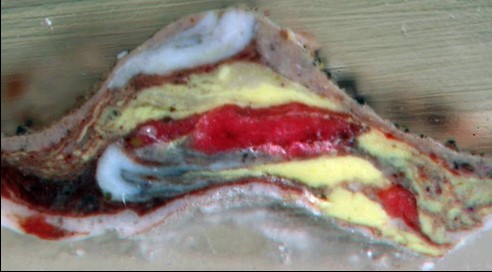
Examination of Paintings by Chen Wen His from the National Gallery in Singapore – photomicrography of a paint layer sample using false colour infrared technique
- Basic microscopic examination of paint layer samples: preparation of aqueous smears, treatment of samples with acids and bases, as well as microchemical analysis of pigments – crystallographic tests, as well as identification of some binders through saponification and staining.
- Examination of canvas supports, including identification of specific plant fibers, determination of the type of canvas used, as well as analysis of the fabric weave and its parameters.

Examination of Paintings by Chen Wen His from the National Gallery in Singapore – photomicrography of the canvas support and microscopic view of the fiber during the analysis of the type of canvas
- Wood analysis aimed at species identification through the determination of its anatomical features. Preliminary preparation of samples from historical objects and the preparation of cross-sections of wood samples.
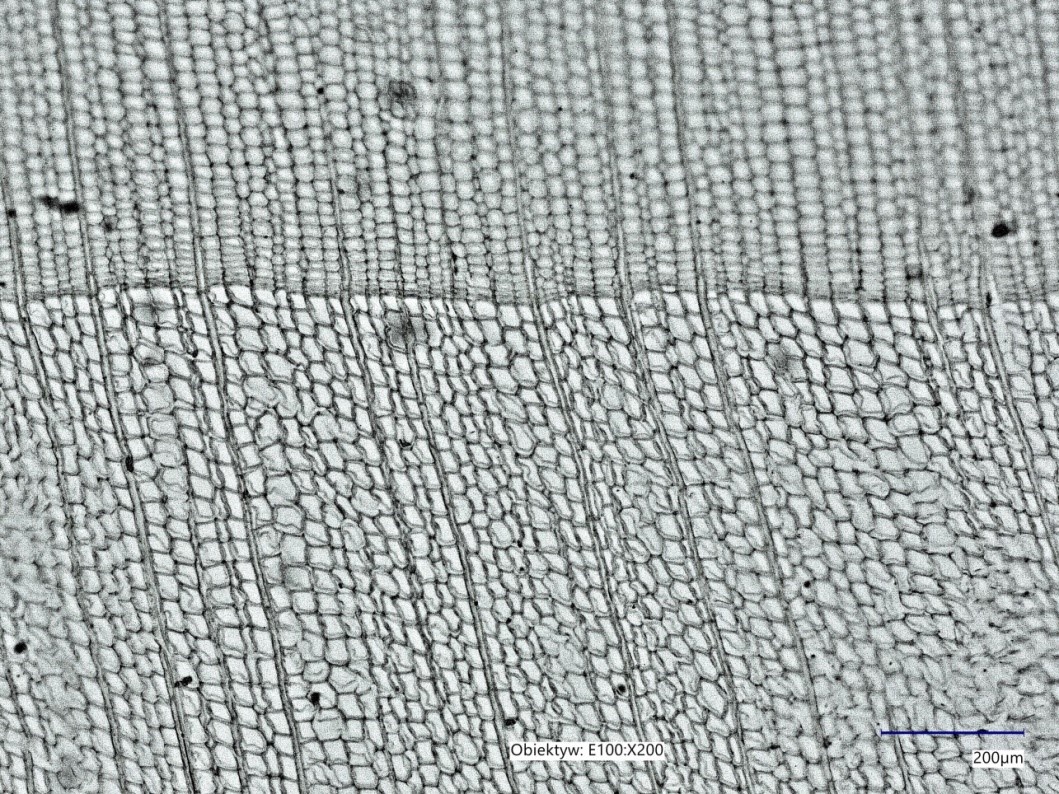
Dendrological studies – cross-section of a spruce wood (Picea) sample; using a Keyence VHX-7000/7000N digital microscope
- Dating of historical wood – dendrochronology. The age of wooden artifacts is determined by comparing the ring pattern (annual growth rings) of the sample under study to a dendrochronological scale.
- Microscopic examination of surfaces of historical objects using the KEYENCE VHX-7000/7000N Digital Microscope allows for high-resolution imaging, as well as determining the thickness of individual layers and creating photographic documentation in both visible light and UV-induced fluorescence. The microscope can also create maps documenting the surfaces of the examined objects in two and three dimensions. This device is primarily used to determine the technique of making historical objects and allows for recording their degradation processes, which are difficult to observe with the naked eye. The microscope can be used to record the surfaces of artifacts to assess the effectiveness of conservation treatments.
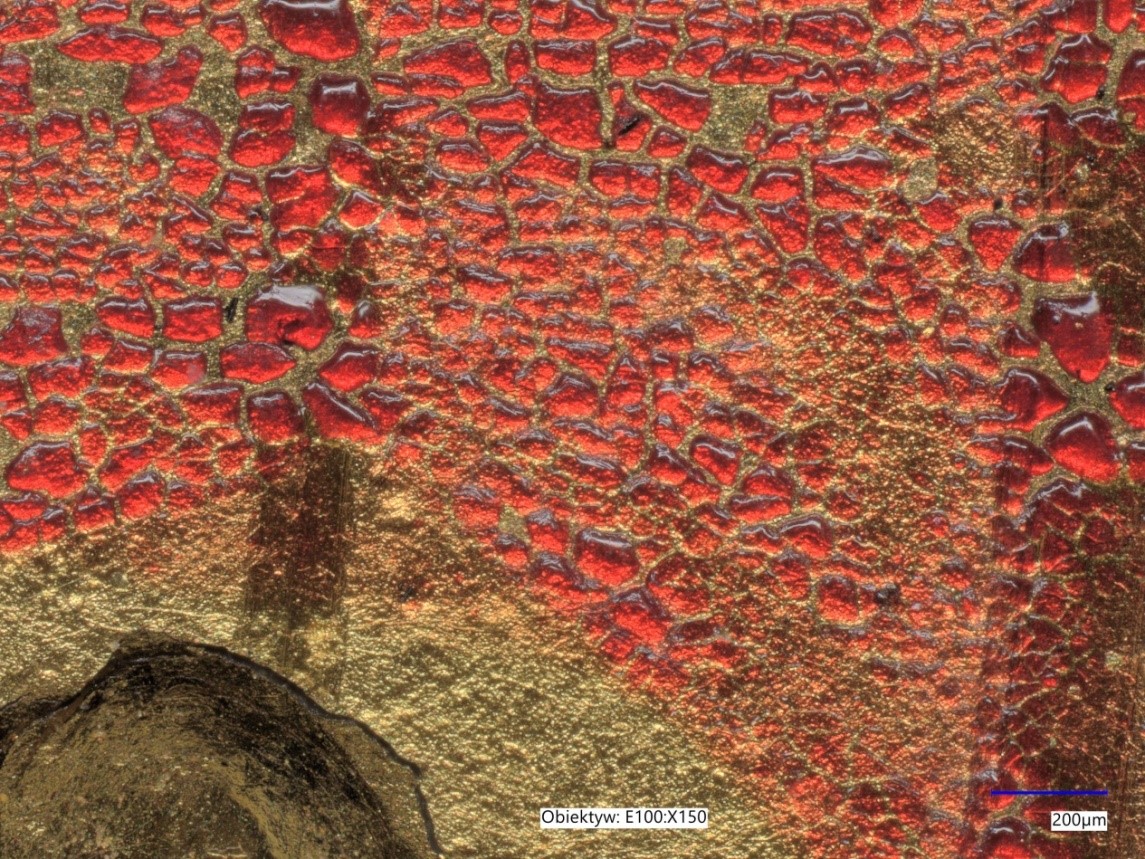
Madonna with Child, Italian-style icon, 19th c. (private collection) – examination of the technique and assessment of the image's degree of deterioration using the KEYENCE VHX-7000/7000N digital microscope.
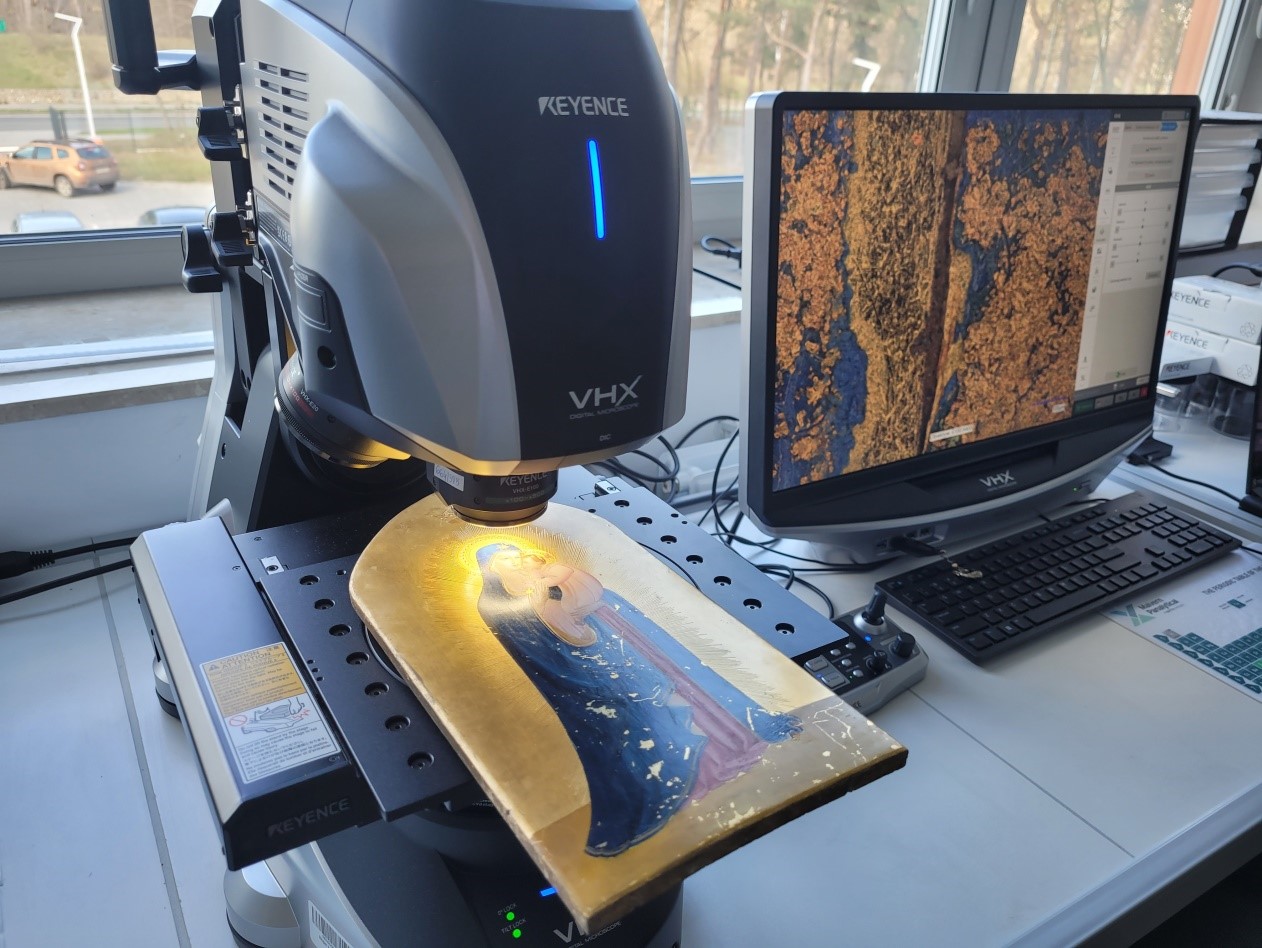
Madonna with Child, Italian-style icon, 19th c. (private collection) – examination of the technique and assessment of the image's degree of deterioration using the KEYENCE VHX-7000/7000N digital microscope.
- Innovative research:
- development of methods for dating works of art based on the identification of chemical compounds formed in historical objects as a result of aging processes and the interaction between pigments and dyes and organic binders present in paint layers (by means of spectroscopic techniques XRD and FTIR),
- project aimed at creating user-friendly software based on artificial intelligence algorithms, which will enable the automatic identification of pigments and organic dyes based on colors recorded in selected imaging techniques and spectral characteristics,
- Research on the development of an innovative methodology for visualizing wall paintings covered with whitewash layers using a system composed of a planar radar and synchronous thermography.
Examples of projects completed by our Laboratory:











